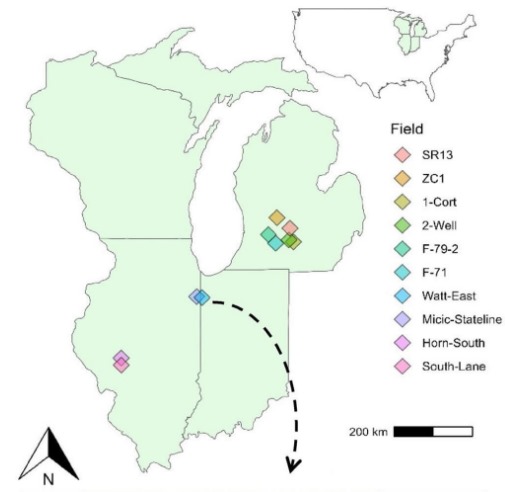An expert in sustainable agriculture, Basso has worked with farmers around the world to develop and implement methods of analyzing spatial and temporal data — which assesses crop management across space and time — to increase yields while lessening negative environmental impacts.
“Agriculture is facing major challenges around feeding a growing world population, climate change and environmental damage such as soil erosion and water pollution,” Basso said. “Boosting soil health can play a major role in combatting these issues. We know that soil health involves biological, chemical, and physical attributes, and we can help influence those to allow soil to provide water and nutrients, as well as sequester carbon.”
For this project, researchers sought to determine the relationship between historical crop yields and soil health, with the hypothesis that high-performing regions of fields have higher-quality soil and vice versa.
“It may seem obvious that areas with good yields have better soil, but we have to remember that there is a tremendous amount of variability within fields,” Basso said. “What we’re trying to do is give farmers prescriptive and precise recommendations on how to optimize their operations by minimizing the use of inputs and mitigating negative environmental impacts, while also maximizing yield. To achieve this, it takes a lot of information and a systems approach that integrates the climate-plant-soil interactions to capture the complex dynamics of agricultural systems.”
Basso said that to obtain this data previously, it required intensive soil sampling across large areas to account for the variability. This is prohibitively expensive for most farmers at the scale needed to gather reliable information.
Researchers are aiming to reduce the reliance on traditional soil testing by using historical yield data and a novel analysis metric known as yield stability zones. These zones leverage both yield level and stability — the consistency of yield — over time, offering a more nuanced understanding that accounts for small-scale, in-field variability.

Ten commercial corn and soybean fields in Michigan, Illinois and Indiana were used in the study. Management practices varied across fields and were not controlled during the research.
Scientists identified yield stability zones in each field using high-resolution, gridded yield monitor data downloaded from harvesting machines. The yield history of each field ranged from 11 to 18 years. Soil samples were also collected and analyzed. The research team scrutinized the data both regionally and locally, considering variations in management practices.
Researchers found that yield stability zones successfully identify differences in areas of fields based on statistically distinct relative soil organic carbon and relative soil health. Basso said the analysis is relevant across various soil types and management practices, and this information can help farmers act more efficiently.
“For example, we saw that low-stability zones have shallower or more compacted soils, higher bulk densities and are located on steeper slopes,” Basso said. “Unstable zones had higher soil organic carbon levels associated with flow accumulation and topsoil accumulation from erosion processes.
Click here to see more...